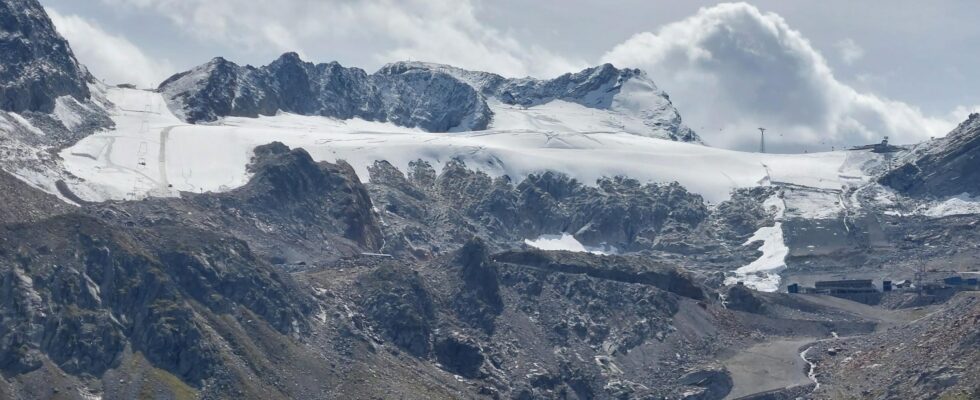The local ice giants lost an average of 23.9 meters in the 2022/2023 observation period. The Paster ores on the Großglockner and the Rettenbachferner in the Ötztal stand out as particularly negative. The prospects are devastating.
The glacier surveyors of the Austrian Alpine Club observed or measured 93 glaciers in Austria for their current glacier report: 92 retreated in the so-called “fiscal year 2022/23” (mid-August 2022 to mid-October 2023). The Alpine Club announced this frightening result on Friday. The average 23.9 meters that the local glaciers have lost in length is not only the third highest value in the 133-year history of the Alpine Association glacier measurement service, but also in the last seven years. Pasterze with a negative record Quite dramatic and stronger than ever before the Pasterze withdrew. At 203.5 meters, it has the highest loss in length of all Austrian long distances. In second place is the Rettenbachferner in the Ötztal Alps with a loss of 127 meters in length, followed by the Sexegertenferner (minus 93.7 m, also in the Ötztal Alps). What is particularly frightening is that the maximum withdrawal amounts in 2022/23 were significantly higher than in the previous year. Among the ten glaciers with the greatest loss of length are no less than nine Tyrolean glaciers! 600 million cubic meters of ice melted “In general, the ‘fiscal year 2022/23’ was extremely unfavorable,” informed Gerhard Lieb, who with Andreas Kellerer-Pirklbauer is the scientific director of the glacier measurement service. “A late, but very long and warm melting period in 2023 was once again the main cause of the extremely unfavorable conditions for glaciers,” said Lieb. The glaciers not only lost length, but also volume. “In total, the mass loss amounts to around 600 million cubic meters of ice,” informed Andreas Kellerer-Pirklbauer. “This corresponds to a cube with an edge length of 843 meters – as long as eight football fields.” According to the experts, the glaciers only exist because of the ice reserves accumulated in the past.For ambitious climate policyGerhard Lieb called for an ambitious climate policy for Austria. However, the retreat of the local glaciers can no longer be stopped. “In around 40 to 45 years, our country will be practically ice-free,” the expert paints a frightening picture. The countdown is running: 40, 39, 38, etc. years, then the previously supposedly eternal ice in the local Alps will have completely disappeared. We’ve somehow already gotten used to this frightening prospect of the future; the horror figures in the current glacier report will hardly knock anyone off their feet or cause them to panic. And quite a few people probably still think that climate change is an invention. It’s quite possible that one or two Tyrolean tourism experts don’t think much of climate change and the death of glaciers. In any case, this would be an explanation for the fact that glacier ski areas should continue to be merged, although the basis for this will soon no longer exist. You are betting on capital that will be lost in the foreseeable future. This can safely be described as negligent. In tourism there must be new ideas and further thinking. Because the hard and unpleasant facts have long been on the table. Unfortunately, the opposite is still happening – almost defiantly – almost everywhere. We will all then be presented with the bill. Time flies, the countdown is on.
source site-12
